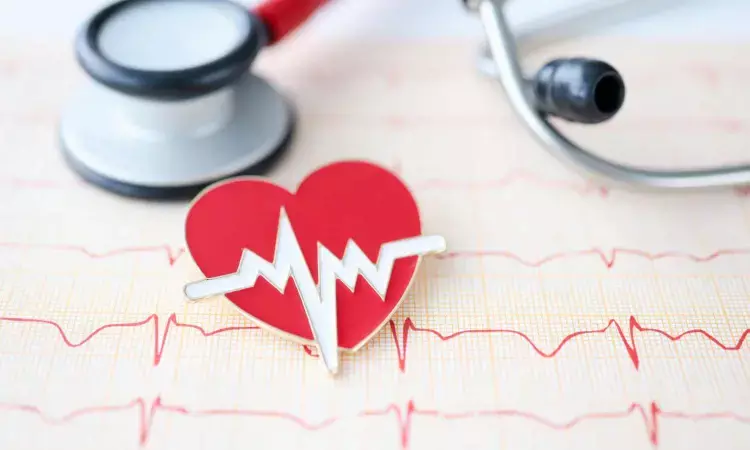- Home
- Medical news & Guidelines
- Anesthesiology
- Cardiology and CTVS
- Critical Care
- Dentistry
- Dermatology
- Diabetes and Endocrinology
- ENT
- Gastroenterology
- Medicine
- Nephrology
- Neurology
- Obstretics-Gynaecology
- Oncology
- Ophthalmology
- Orthopaedics
- Pediatrics-Neonatology
- Psychiatry
- Pulmonology
- Radiology
- Surgery
- Urology
- Laboratory Medicine
- Diet
- Nursing
- Paramedical
- Physiotherapy
- Health news
- Fact Check
- Bone Health Fact Check
- Brain Health Fact Check
- Cancer Related Fact Check
- Child Care Fact Check
- Dental and oral health fact check
- Diabetes and metabolic health fact check
- Diet and Nutrition Fact Check
- Eye and ENT Care Fact Check
- Fitness fact check
- Gut health fact check
- Heart health fact check
- Kidney health fact check
- Medical education fact check
- Men's health fact check
- Respiratory fact check
- Skin and hair care fact check
- Vaccine and Immunization fact check
- Women's health fact check
- AYUSH
- State News
- Andaman and Nicobar Islands
- Andhra Pradesh
- Arunachal Pradesh
- Assam
- Bihar
- Chandigarh
- Chattisgarh
- Dadra and Nagar Haveli
- Daman and Diu
- Delhi
- Goa
- Gujarat
- Haryana
- Himachal Pradesh
- Jammu & Kashmir
- Jharkhand
- Karnataka
- Kerala
- Ladakh
- Lakshadweep
- Madhya Pradesh
- Maharashtra
- Manipur
- Meghalaya
- Mizoram
- Nagaland
- Odisha
- Puducherry
- Punjab
- Rajasthan
- Sikkim
- Tamil Nadu
- Telangana
- Tripura
- Uttar Pradesh
- Uttrakhand
- West Bengal
- Medical Education
- Industry
High Altitude Climbing Increases Risk of Cardiac Arrhythmia, reveals JAMA study

Exposure to high altitudes presents physiological challenges such as arterial hypoxemia, electrolyte imbalances, and periodic breathing, which can increase vulnerability to cardiac arrhythmias. Cardiac arrhythmias, including tachyarrhythmias and bradyarrhythmias, pose serious health risks, particularly in challenging environments such as high altitudes.
However, the incidence and characteristics of arrhythmias in individuals undertaking extreme altitude climbs like Mount Everest remain understudied. A recent study was published in the journal JAMA Cardiology. The study was conducted by Sherpa K. and colleagues. This prospective cohort study aimed to explore the incidence of tachyarrhythmias and bradyarrhythmias in healthy individuals during a high-altitude expedition to Mount Everest.
Healthy individuals participating in the expedition underwent baseline cardiac evaluations, including electrocardiogram and echocardiography, before ascending Mount Everest. Ambulatory rhythm recording was conducted both before and during the climb. The primary outcome was the incidence of a composite of supraventricular and ventricular tachyarrhythmias, as well as bradyarrhythmias.
The key findings of the study were:
• 41 male individuals, with a mean age of 33.6 years, participated in the study.
• 38.2% of participants experienced cardiac arrhythmias during the climb, with 45 primary endpoint-relevant events recorded.
• Bradyarrhythmic events were more common, with 43 events documented in 13 individuals, compared to 2 ventricular tachycardias in 2 individuals.
• Arrhythmias occurred more frequently at lower altitudes without supplemental oxygen, with 80% of events occurring in this setting.
• The proportion of individuals with arrhythmias remained stable across altitudes, while event rates numerically increased between 5300 m and 7300 m before decreasing again at higher altitudes.
The study confirms a significant association between high-altitude exposure and the incidence of cardiac arrhythmias, with over one-third of healthy climbers experiencing arrhythmias during the ascent of Mount Everest. These findings underscore the importance of further research to explore the implications and management of cardiac rhythm disturbances in extreme altitude environments.
Understanding the prevalence and characteristics of cardiac arrhythmias in high-altitude climbers can inform risk assessment and management strategies for individuals undertaking similar expeditions. Additionally, these findings emphasize the need for medical interventions and monitoring to mitigate the risks associated with cardiac arrhythmias during high-altitude climbs.
Reference:
Sherpa, K., Sherpa, P. P., Sherpa, T., Rothenbühler, M., Ryffel, C., Sherpa, D., Sherpa, D. R., Sherchand, O., Galuszka, O., Dernektsi, C., Reichlin, T., & Pilgrim, T. (2024). Risk of cardiac arrhythmias among climbers on Mount Everest. JAMA Cardiology. https://doi.org/10.1001/jamacardio.2024.0364
Dr Riya Dave has completed dentistry from Gujarat University in 2022. She is a dentist and accomplished medical and scientific writer known for her commitment to bridging the gap between clinical expertise and accessible healthcare information. She has been actively involved in writing blogs related to health and wellness.
Dr Kamal Kant Kohli-MBBS, DTCD- a chest specialist with more than 30 years of practice and a flair for writing clinical articles, Dr Kamal Kant Kohli joined Medical Dialogues as a Chief Editor of Medical News. Besides writing articles, as an editor, he proofreads and verifies all the medical content published on Medical Dialogues including those coming from journals, studies,medical conferences,guidelines etc. Email: drkohli@medicaldialogues.in. Contact no. 011-43720751


